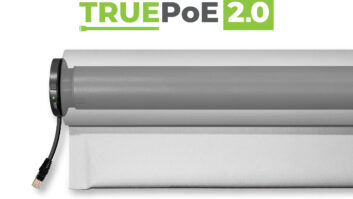Troy, Mich. – Beleaguered Kmart Corp. finally filed for chapter 11 bankruptcy protection this morning and announced that it has secured a $2 billion debtor-in-possession (DIP) line of credit from Credit Suisse First Boston, Fleet Retail Finance, General Electric Capital and JPMorgan Chase Bank.
At least for the short term, all 2,114 Kmart stores remain open, its return policies remain in effect, and the company’s credit cards, checks, gift certificates, store credits will be honored.
The bailout, which remains subject to Bankruptcy Court approval, could do much to calm nervous manufacturers who’ve placed the crippled company on a tight credit watch. ‘Vendors, suppliers and other business partners will be paid under normal terms for goods and services provided during the reorganization,’ Kmart said, noting that it filing showed total assets of $17 billion at book value and total liabilities of $11.3 billion as of the fiscal quarter ended October 31, 2001.
The company, which ranked 10th on TWICE’s Top 100 CE Retail Registry with $2.6 billion in electronics sales, said it will reorganize on a ‘fast-track basis’ with the goal of emerging from the nation’s largest-ever retail bankruptcy by 2003.
‘We are committed and determined to complete our reorganization as quickly and as smoothly as possible, while taking full advantage of this chance to make a fresh start and reposition Kmart for the future,’ said CEO Charles Conaway. ‘We deeply regret any adverse effect today’s action will have on our associates, vendors and business partners. But after considering a wide range of alternatives, it became clear that this course of action was the only way to truly resolve the company’s most challenging problems.’
According to Kmart, those include the reduction of its cash flow to a trickle following a dismal fourth quarter; the downgrading of its bonds to junk status; and erosion of supplier confidence. Chief among the latter was Fleming, Kmart’s sole grocery supplier, which said it would cease deliveries after the retailer had missed a weekly payment. Fleming has since said it would resume shipments pending ‘satisfactory assurances from Kmart, via the bankruptcy court.’
Less clear is the commitment of Martha Stewart, whose private label home fashions had helped keep Kmart afloat, and who could invoke a contractual bankruptcy clause allowing her to take her licensed line elsewhere.
Kmart said other factors that prompted its chapter 11 petition include ‘intense competition in the discount retailing industry, unsuccessful sales and marketing initiatives, the continuing recession, and recent capital market volatility.’ That volatility caused its stock price to plummet to a 38-year low this month, and fall 55 percent to 78 cents a share within hours of the bankruptcy announcement.
James Adamson, who succeeded Conaway this month as Kmart’s chairman, noted that vendors would need to resume normal trade terms and full merchandise shipments within the first 60 days of the reorganization case in order to receive a second lien on Kmart’s collateral for their post-petition accounts payable. ‘With that support, and with the protection of chapter 11, we are confident the company will move forward in a better position to restructure for the future,’ he said.
According to its filing in the U.S. Bankruptcy Court for the Northern District of Illinois in Chicago, Kmart’s top 50 unsecured creditors include Buena Vista Home Video ($56,275,198); Nintendo of America ($44,913,692); Mattel Toys ($44,120,598); and Twentieth Century Fox Home Entertainment ($34,219,742).
While other vendors generally lauded Kmart’s actions, their optimism remained guarded. As a Kodak spokesman noted, ‘We remain committed to Kmart through their restructuring; they are still a valued customer. We do not expect this to have a material effect on Kodak but we are placing products already shipped to K-Mart on a `doubtful accounts’ status, reflecting the uncertainty of their situation.’
Said Mike Merriman, president/CEO of Royal Appliance, maker of Dirt Devil floor care products, ‘Kmart is in a tough retail environment, but we’re hopeful that they will take the necessary steps to successfully reorganize.’
Added Fleming chairman/CEO Mark Hansen, ‘Kmart’s debtor in possession financing gives it the critical liquidity needed to fund its operations during the reorganization process, a necessary first step in resuming our relationship. Additionally, Kmart’s reorganization can be an opportunity to close under-performing, high-cost-to-serve stores and redirect capital toward efficient, highly productive discount stores and supercenters. We believe today’s filing provides Kmart the opportunity to better focus company resources on these top performing assets.’
Kmart’s bankruptcy could be the first in a flood of chapter 11 filings, warned H. Jason Gold, managing principal of Gold Morrison & Laughlin PC, a Tysons Corner, Va.-based bankruptcy, restructure and insolvency law firm. ‘By mid-to-late January retailers have usually collected all the revenue from end-of-year holiday sales,’ he said. ‘But at the same time, the bills start coming due, and there are indications that retail chains large and small that were struggling in the slowed economy and that were further impacted by the events of September 11th will be failing. There has been a high level of activity among reorganization professionals who are trying to keep up with all the work.’
Meanwhile, Kmart’s Adamson, an outside director and turnaround specialist who got the Denny’s fast food chain back on its feet, together with newly appointed executive VP/chief restructuring officer Ronald Hutchinson, will guide the No. 2 discount chain through its reorganization and help senior management rebuild and reposition the business.
To accomplish that, the company says it plans to:
- Close unprofitable or underperforming stores this year and terminate money-losing sub-leases;
- Reduce annual expenses by an additional $350 million by reorganizing, cutting staff, consolidating offices, and ‘other actions’;
- Offer exclusive brands that will differentiate Kmart from its competitors;
- Optimize the supply chain to maximize efficiencies and service capabilities;
- Invest in critical technology and standardized information technology platforms.
Conaway, a retail wunderkind who helped revitalize the CVS pharmacy chain, had already launched several of the initiatives since taking the helm in 2000. But whether Kmart can buy enough time to overhaul its inventory control systems and establish a niche between low-price leader Wal-Mart and upscale discounter Target remains to be seen. Additional reporting by Greg Scoblete and Jeff Malester













